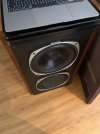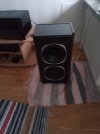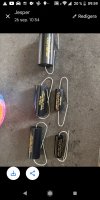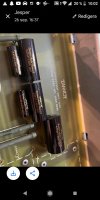DanielT
Master Contributor
Which amp of these two is best for the Elac Debut Reference DBR-62?Edit: Prerequisite, starting point that the amplifier is able to reproduce the signal as linearly as possible together with the speaker in question.
In this case, remove the amp power (or rather start from the test below for Aiyima, i.e. power supply: 32 volt, 5 amp switching power supply) as a part of the equation.
Just consider how these amps handle the Elac Debut Reference DBR-62 best.

 audiosciencereview.com
audiosciencereview.com
V.S.:
An older NAD amp but based on the results in Amir's test:

 audiosciencereview.com
(issue results in Amir's test)
audiosciencereview.com
(issue results in Amir's test)
How should one interpret the measurements in these tests in order to determine which amplifier can handle the Elac Debut Reference DBR-62 best? Observe in reality? FR deviations is the most decisive criterion.
I see FR deviations in these cases as the most problematic part. Or do both amplifiers handle FR deviations equally well?
Amir:
"However, note the area I have circled. Impedance is high at about 8 ohms but the phase angle is quite acute at nearly 50 degrees. This means the speaker will ask for current when the output voltage is very low. So you better have a beefy amplifier to drive this speaker."


 audiosciencereview.com
audiosciencereview.com
Selection of the Elac Debut Reference DBR-62 made because it is a (the most? ) recommended speaker on the ASR.
In this case, remove the amp power (or rather start from the test below for Aiyima, i.e. power supply: 32 volt, 5 amp switching power supply) as a part of the equation.
Just consider how these amps handle the Elac Debut Reference DBR-62 best.

AIYIMA A07 TPA3255 Review (Amplifier)
This is a review and detailed measurements of the AIYIMA A07 desktop amplifier based on TPA3255 class D amplifier chip. It was kindly purchased new by a member and drop shipped to me. The cost is US $72 on Amazon including prime shipping. And as of this shipping, it also included a 32 volt, 5...
 audiosciencereview.com
audiosciencereview.com
V.S.:
An older NAD amp but based on the results in Amir's test:

Review and Measurements of NAD C 320BEE PWR Amplifier
This is a review and detailed measurements of the NAD C 320BEE power (speaker) amplifier. It is on kind loan. The C 320BEE is a vintage product, dating back to 2003 I think. The BEE designation is apparently a reference to Bjorn Erik Edvardsen who was one of their designers. Can't tell if he...
 audiosciencereview.com
audiosciencereview.com
How should one interpret the measurements in these tests in order to determine which amplifier can handle the Elac Debut Reference DBR-62 best? Observe in reality? FR deviations is the most decisive criterion.
I see FR deviations in these cases as the most problematic part. Or do both amplifiers handle FR deviations equally well?
Amir:
"However, note the area I have circled. Impedance is high at about 8 ohms but the phase angle is quite acute at nearly 50 degrees. This means the speaker will ask for current when the output voltage is very low. So you better have a beefy amplifier to drive this speaker."

Elac Debut Reference DBR-62 Speaker Review
This is a review and detailed measurements of the Elac Debut Reference DBR-62 bookshelf speaker. It was kindly purchased new and drop shipped to me for testing. The DBR-62 costs US $600 a pair from multiple sources/dealers. The DBR-62 comes in black and walnut finish or the distressed Oak and...
 audiosciencereview.com
audiosciencereview.com
Selection of the Elac Debut Reference DBR-62 made because it is a (the most? ) recommended speaker on the ASR.
Last edited:



